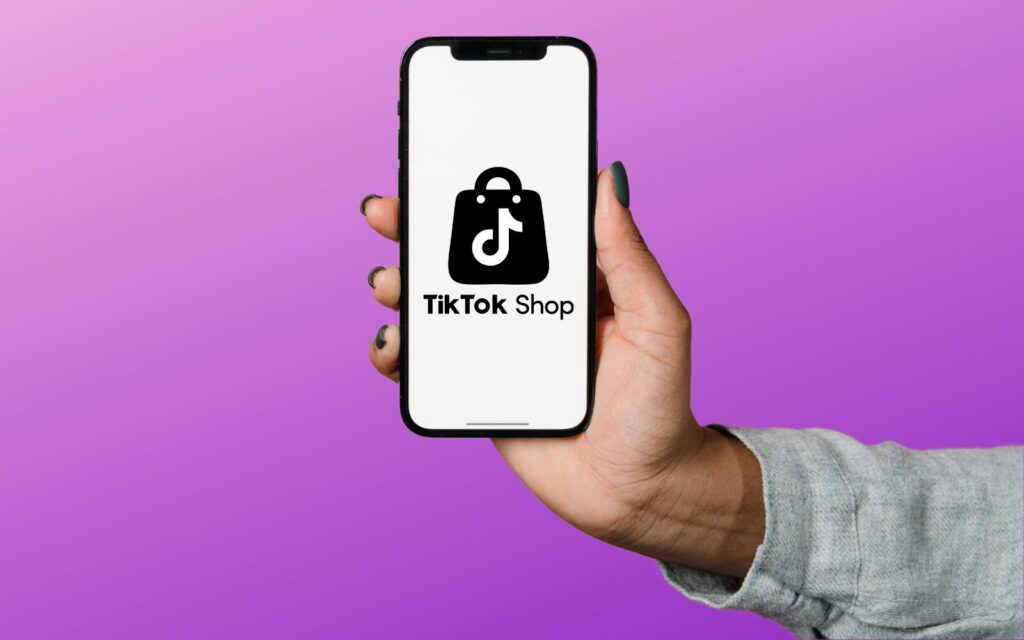Performance Growth
Is TikTok Shop Worth It? A SWOT Analysis for Emerging and Established Brands

TikTok Shop is quickly rising as a major player in the social commerce scene, offering brands an exciting new way to engage with younger audiences through a seamless blend of entertainment and shopping. However, the platform’s potential comes with challenges, leaving many brands in a dilemma: Should we invest in TikTok Shop or proceed with caution? In this blog post, we’ll dive into a comprehensive SWOT analysis to help you weigh the pros and cons and decide if TikTok Shop is the right move for your brand.

Learn How to Make Listings That Convert in 2025!
Read our step-by-step guide on how to optimize your listings using Rufus AI insights. Sign up for our newsletter and get your copy for free!
Show me howStrengths to Harness
These are the areas where TikTok excels, giving brands the edge in visibility, engagement, and growth. Understanding these strengths can help brands utilize them to maximize their impact on the platform.
High Engagement and Reach
TikTok’s algorithm is all about getting content in front of the right people. It prioritizes engaging, relevant videos, which means your products have a solid chance of being seen by your ideal customers. With approximately 102 million users in the United States (as of 2023), TikTok’s engagement rates help ensure that your brand messages don’t just reach potential buyers—they resonate with them, driving higher interaction and boosting recognition.
Influencer Marketing Potential
TikTok is a key platform for influencer marketing, where creators significantly influence their followers’ buying decisions. By collaborating with influencers, brands can tap into existing communities, building credibility and trust. This strategy often leads to authentic connections with audiences through genuine recommendations. Given that 64% of TikTok users are motivated to purchase based on influencer recommendations, aligning with popular creators can be a powerful way to boost brand recognition and drive sales.
Short-Form Video Content
TikTok’s short, snappy video format is perfect for showcasing products in a way that grabs attention and sticks in the mind. These quick clips allow brands to creatively highlight key benefits, whether through tutorials, product demos, or lifestyle content that vibes with current trends. To make the most of TikTok’s format, focus on visually appealing, concise content that resonates with the platform’s audience, making your product memorable and shareable.
Appeal to Younger Demographics
TikTok is particularly popular among Gen Z and Millennials, who are key consumers in the health and wellness market. These demographics are drawn to the platform’s authentic and entertaining content. Understanding and catering to the preferences of these users will enable brands to effectively engage a significant portion of their target market, driving both awareness and sales.
Weaknesses to Consider
Here, we identify areas where TikTok Shop might fall short, helping brands recognize potential challenges. Knowing these weaknesses allows brands to prepare and strategize around them.
Brand Perception Challenges
TikTok’s reputation as a platform for younger audiences can be a mismatch for some brands targeting broader demographics. To bridge this gap, brands should create content that appeals to both younger users and their primary audience by focusing on universal themes and relatable messaging. Partnering with influencers who appeal across age groups can also help broaden the platform’s appeal, ensuring the content resonates with a wider audience and strengthens brand perception.
Complexity in Content Creation
Making content that feels authentic and engaging on TikTok can be tricky, especially for brands used to traditional advertising methods where messaging is often polished and controlled. TikTok thrives on a more casual, spontaneous vibe that resonates with its users. Brands need to adapt by embracing a looser, more creative approach—think quick cuts, catchy sounds, and even some playful imperfections. The challenge lies in balancing this authenticity with brand messaging, which might require a significant shift in how content is typically created and shared.
E-commerce Growth Stage
TikTok Shop, while promising, is still developing its e-commerce capabilities, especially compared to giants like Amazon. If not done right, brands could face issues with transaction reliability and consumer trust, possibly resulting in lower conversion rates and higher cart abandonment. As such, it’s wise for brands to view TikTok Shop as a secondary channel. Managing expectations, closely tracking performance, and being patient as the platform matures will be crucial for leveraging its full potential.
Algorithmic Challenges
TikTok’s algorithm can be a bit unpredictable, which might result in inconsistent visibility for brands. A post that goes viral today might not reach the same audience tomorrow, making it tough to maintain steady engagement. To navigate this, brands should post consistently, keep a close eye on performance metrics, and adjust their content strategies based on the algorithm’s behavior at any given time. Staying flexible and responsive is key to riding TikTok’s algorithmic waves.
Opportunities for Growth
Is it worth it to sell on TikTok Shop? This section can help answer your question based on its potential areas for growth and expansion. Here, we identify ways to capitalize on TikTok Shop’s evolving features and trends, so brands can stay ahead of the curve and make the most out of new developments.
Early Adoption Benefits
Getting in on TikTok Shop early lets brands take advantage of its rapidly expanding user base and relatively low competition. Early adopters can build strong brand loyalty by engaging users and refining their strategies as the platform grows. This proactive approach helps secure a solid foothold before the marketplace becomes saturated, giving these brands a competitive edge.
For instance, E.l.f. Cosmetics has thrived on TikTok Shop by creatively engaging with users and launching culturally relevant products. E.l.f. boosted their presence with successful campaigns like the TikTok Shop Super Brand Day, where they offered promotions that drove significant engagement and sales. A standout example is their Power Grip Primer, which became the No. 1 SKU in mass color cosmetics. This early adoption has helped E.l.f. secure a dominant position in the highly competitive beauty market.
Integrated Shopping Experience
TikTok’s magic lies in how it blends entertainment with shopping, making it almost too easy for users to give in to impulse buying. Brands can tap into this by creating content that subtly weaves in product showcases—think mindblowing tutorials or authentic testimonials—that make viewers want to hit “shop now” without leaving the app.
Data-Driven Personalization
TikTok’s advanced data capabilities allow brands to target specific consumer segments with precision. As TikTok Shop evolves, new features like enhanced analytics, platform integration, and improved e-commerce tools will offer even more opportunities to optimize strategies. Brands that stay on top of these developments and adapt quickly can better streamline operations and maximize ROI, maintaining a competitive edge in a rapidly changing digital landscape.
Potential Threats
Here, we highlight external factors that could impact a brand’s success on TikTok Shop. Understanding these threats enables brands to proactively address potential risks and adapt their strategies to stay competitive.
Regulatory Scrutiny
Growing concerns over data privacy and content regulation could lead to serious consequences for TikTok, including the possibility of a U.S. ban. Such a ban would severely disrupt TikTok’s e-commerce capabilities, cutting off access to a massive market and impacting brands that rely on the platform to reach American consumers. Stricter regulations might also limit data usage, affecting personalized advertising and making it harder for brands to connect with their target audience. Staying alert to these developments is crucial for navigating potential disruptions.
Competitive Landscape
TikTok Shop is up against some serious competition from well-established social commerce platforms like Instagram and Facebook Shops, which come with more advanced e-commerce features and refined targeting options. Therefore, instead of just relying on TikTok’s video-centric approach, brands could explore collaborations across platforms, integrating TikTok content with other social media channels to create a more cohesive brand experience. Diversifying content formats—like using interactive live shopping events—can also help brands differentiate themselves and reach broader audiences.
Market Saturation
As TikTok Shop grows, competition is intensifying, especially among younger consumers. A February 2024 survey found that 31% of U.S. digital buyers aged 18-34 have made purchases on TikTok, compared to 35% on Instagram and 36% on Facebook. To truly stand out, brands need to focus on hyper-targeted strategies, such as collaborating with micro-influencers who resonate with specific communities, and creating interactive, personalized content that fosters deeper connections.
Consumer Trust Issues
Is TikTok Shop safe? Is TikTok Shop legit? Such concerns about product authenticity and data privacy continue to raise red flags for TikTok Shop. Reports of counterfeit items, suspiciously low prices, and misspelled brand names have led many customers to question the legitimacy of the platform. Adding to the skepticism is TikTok’s algorithm-driven product listings and the presence of brands previously banned from Amazon. With TikTok’s data collection practices under scrutiny, particularly due to its ownership by Chinese company ByteDance, integrating Amazon Ads with TikTok can be a safer alternative for boosting consumer confidence while reaching a broad audience.
Conclusion
TikTok Shop is a prime opportunity for brands aiming to connect with younger consumers and leverage influencer-driven sales. However, given the platform’s early stage in e-commerce, brands need a smart, adaptable approach.
Emerging brands can capitalize on TikTok’s high engagement and reach by focusing on creative, authentic content that resonates with niche audiences. By collaborating with micro-influencers and leveraging TikTok’s data-driven personalization, they can effectively target specific consumer segments without breaking the bank.
On the other hand, enterprise brands can maximize their impact by investing in high-quality, visually engaging content that appeals to TikTok’s younger demographics. They can also explore cross-platform strategies by integrating their Amazon store with TikTok and other social media channels to create a cohesive brand experience. With more resources, they can experiment with diverse content formats, like interactive live shopping events, to stand out in a crowded market.
Overall, brands must stay agile and responsive to TikTok Shop’s evolving features and potential regulatory challenges. By keeping a close eye on performance metrics and adjusting strategies as needed, brands of all sizes can build a strong presence on TikTok, navigating the competitive landscape and driving long-term growth.
LET’S DISCOVER WHAT’S POSSIBLE FOR YOUR BRAND
We’re here to listen and uncover opportunities tailored to your unique goals.
Fill out the form to get started, and you’ll walk away with real insights and actionable recommendations—whether we work together or not.
- HANDS-ON LEADERSHIP
- AWARD-WINNING PARTNERSHIPS
- CUSTOM-BUILT SOLUTIONS




